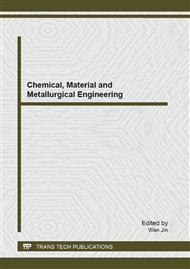p.128
p.132
p.137
p.142
p.147
p.155
p.161
p.167
p.173
Water Quality Monitoring, Early Warning and Identification of Risk Sources of South Lake Central Ecological Park in Tangshan City
Abstract:
Objectives To assess the current eutrophication and heavy metal pollution condition of South Lake by monitoring the water quality of South Lake Central Ecological Park in Tangshan city and to provide basic information and science basis for the continuity environmental monitoring and further treatment. Methods The water samples in South Lake were collected during 10th-12st May, 2011. Samples of surface water in Xixingchi, Yanglongshui, and Qingtianjing were determined temperature, pH, turbidity, dissolved oxygen (DO), biochemical oxygen demand (COD), biological oxygen demand (BOD520), total phosphorus (TP), ammonia nitrogen, nitrite nitrogen, nitrate nitrogen, Hg, As, Cr, Cu, Zn, Ni, Pb, Cd and so on. Single water quality index and the integrated pollution index were calculated to assess water quality of sampling point. Results The sense character of all sample points did not accord with national standards.The BOD520 of Xixingchi, West Yanglongshui, North Yanglongshui and the four sampling points of Qingtianjing were more than national standards. The TP, ammonia nitrogen and nitrate nitrogen of Qingtianjings sample points exceeded national standards. Indicatorss of other sample were accord with national standards. Xixingchi, whichs comprehensive pollution index was 0.27, belonged to clean water. Yanglongshui, which`s comprehensive pollution index was 0.22, belonged to clean water too. Qingtianjing, whichs comprehensive pollution index was 1.99, belonged to polluted waters. Conclusions Xixingchi and Yanglongshui belongs to clean water. Qingtianjing belongs polluted water. The TP, ammonia nitrogen and nitrate nitrogen of Qingtianjings four sample points exceeded national standards. The severity of the pollution is: Qingtianjing>Yanglongshui>Xixingchi.
Info:
Periodical:
Pages:
147-151
Citation:
Online since:
August 2013
Authors:
Price:
Сopyright:
© 2013 Trans Tech Publications Ltd. All Rights Reserved
Share:
Citation:


